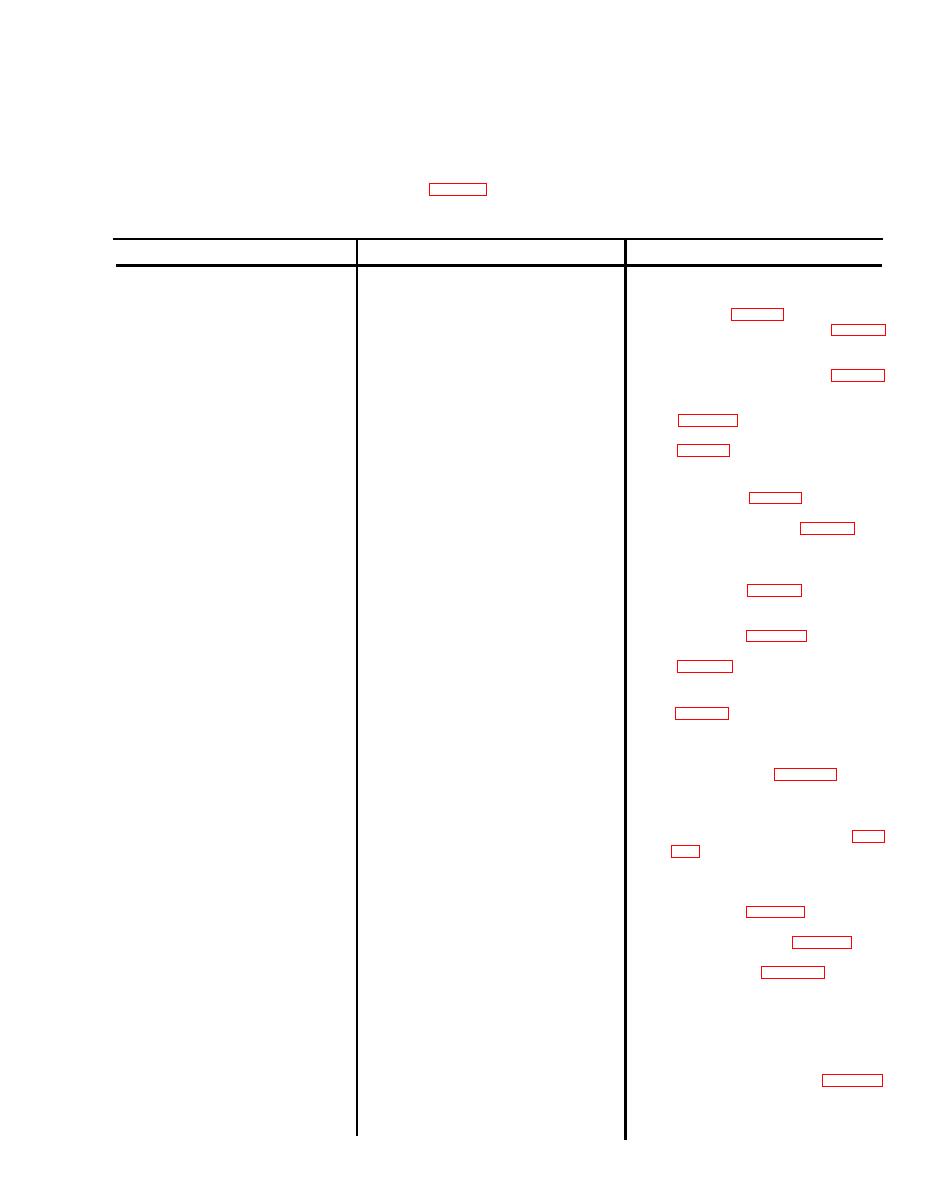 |
|||
|
|
|||
|
|
|||
| ||||||||||
|
|
 Section IV. TROUBLESHOOTING
3-6. General
2 . Each malfunction stated is followed by a list of
probable causes of the trouble. The corrective
This section provides information useful in
action recommended is described opposite the
diagnosing and correcting unsatisfactory operation
probable cause.
o r failure of the air conditioner and its components.
M a l f u n c t i o n s which may occur are listed in table 3-
Table 3-2. Troubleshooting
Corrective Action
Probable Cause
Malfunction
Insure that 115 volt, 50 or 60 Hertz
1. Fan motor does not operate.
No power to air conditioner.
power is available to the air con-
ditioner (para 2-3).
2. Fan motor runs at low speed only.
Close circuit breaker contacts (para
Circuit breaker contacts open.
2-9).
3. Insufficient air flow. Fan motor
a. O b s t r u c t i o n t o c o n d e n s e r o r
operates correctly.
and evaporator air movement (para
evaporator air flow.
2-3 and 3-9).
b. Open return or discharge air grilles
b. Evaporator intake or discharge air
grilles closed.
a. Close circuit breaker contacts
4. No power to low voltage control
a. Circuit breaker contacts open.
circuit.
b. Insure that 115 volt, 50 or 60
b. No power to air conditioner.
Hertz power is available to the air
conditioner (para 2-3).
5. Compressor will not start.
a. Push reset button to reset high and
a. Contacts of high or low pressure
low pressure cutout (para 2-9).
cutout open.
b. Insure that 115 volts, 50 or 60
b. Insufficient power supply.
Hertz power with at least a 30
ampere service is supplied to the air
conditioner (para 2-3).
c. Outdoor air temperature below
the 50F. setting of the outside air
setting of outside air thermostat.
thermostat (para 2-12).
d. Close circuit breaker contacts
d. Circuit breaker contacts open.
6. Compressor starts but goes out on
a. Low voltage at compressor.
a. insure that not less than 109 volts
overload.
is supplied to the air conditioner
b. Restricted air flow to evaporator or
condenser coil.
a n d air movement. Insure that
evaporator intake and discharge air
grilles are open (para 2-11).
7. Little or no cooling. Compressor
a. Restricted air flow to evaporator or
and fan motor run properly.
condenser coil.
and evaporator air movement.
insure that the evaporator intake
and discharge grilles are ripen (para
b. Excessive amount of hot outdoor
b. Insure that the fresh air damper is
air being introduced.
closed to provide the minimum
introduction of outdoor air for
ventilation (para 2-11).
c. Temperature control thermostat
c. Lower setting of temperature
set too high.
control thermostat (para 2-11).
a. Restricted air flow to the con-
8. High pressure cutout trips ex-
Ia. Remove obstructions to condenser
denser coil.
air movement (para 2-21).
cessively.
b. Extremely high outdoor ambient
b. The air conditioner is designed to
operate at not greater than 120 F.
temperature.
ambient
air temperature. If
tripping occurs because of excessive
temperatures, raise the setting of
the temperature control thermostat
to reduce the cooling load (para 2-
11).
|
|
Privacy Statement - Press Release - Copyright Information. - Contact Us |